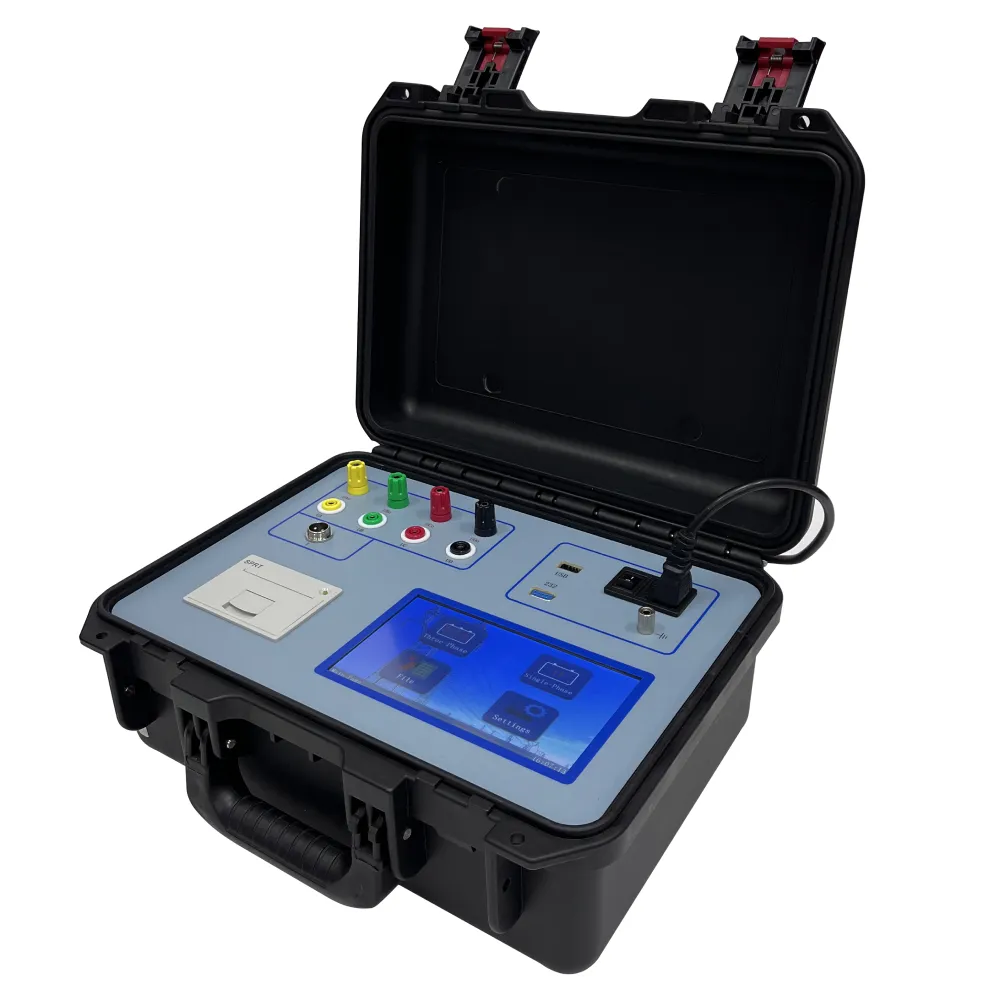 English
English


Understanding the Functionality and Applications of Winding Resistance Measurement Devices for Electrical Equipment
Understanding the Winding Ohmmeter A Crucial Tool for Electrical Diagnosis
In the realm of electrical engineering and maintenance, precision and accuracy are paramount. One essential instrument that ensures the reliability of electrical systems, particularly in motors and transformers, is the winding ohmmeter. This specialized device plays a critical role in assessing the resistance of winding coils, ensuring that electrical components function optimally and safely.
What is a Winding Ohmmeter?
A winding ohmmeter is a type of ohmmeter designed explicitly to measure the resistance of winding coils in electromechanical devices such as motors, generators, and transformers. Unlike standard ohmmeters, winding ohmmeters can apply a higher test voltage, enabling them to detect insulation failures and other issues that a regular ohmmeter might miss. This capability is particularly vital because many electrical systems operate at high voltages, where insulation breakdown can lead to catastrophic failures.
Importance of Measuring Winding Resistance
Measuring the resistance of the windings is crucial for several reasons. First, it helps in diagnosing potential failures in the coil windings. High resistance can indicate loose connections or corroded terminals, while very low resistance could signal a short circuit or insulation breakdown. Identifying these issues before they escalate can save considerable time and money in repairs or replacements.
Second, monitoring winding resistance can help maintain the efficiency of the electrical equipment. Winding resistance can affect current flow, leading to overheating, reduced performance, and ultimately, failure of the equipment. Regular testing with a winding ohmmeter can ensure that systems are operating within their designed parameters.
winding ohmmeter

How Does a Winding Ohmmeter Work?
A winding ohmmeter operates by applying a known voltage across the winding under test and measuring the resulting current flow. Using Ohm’s law (V=IR), the device calculates the resistance of the winding. The test can also be performed using a megohmmeter, which applies a higher voltage to assess insulation integrity and identify issues that may not be visible during regular testing.
Many winding ohmmeters come equipped with features such as automatic test sequences and digital displays, making it easier for operators to interpret results quickly. Some models also include data logging capabilities, allowing technicians to track resistance over time and detect trends that may indicate emerging problems.
Best Practices in Using a Winding Ohmmeter
To ensure accurate readings and prolong the lifespan of both the tester and the equipment being tested, operators should follow best practices. First, ensure that the power to the device is turned off and that you follow lockout/tagout procedures to prevent accidental energization. Next, clean the terminals of the winding to remove dirt and oxidation, which can affect resistance readings. Finally, perform multiple tests at different times and under varying temperature conditions to account for environmental influences on resistance.
Conclusion
In conclusion, the winding ohmmeter is an indispensable tool in the maintenance and diagnosis of electrical equipment. By measuring the resistance of winding coils, it helps engineers and technicians identify potential failures, optimize performance, and extend the operational life of electromechanical systems. As technology continues to advance, the functionality and accuracy of these devices will undoubtedly improve, further aiding professionals in maintaining safe and efficient electrical systems. Utilizing a winding ohmmeter not only enhances operational efficiency but also significantly contributes to the safety and reliability of electrical infrastructure.
-
Differences between open cup flash point tester and closed cup flash point testerNewsOct.31,2024
-
The Reliable Load Tap ChangerNewsOct.23,2024
-
The Essential Guide to Hipot TestersNewsOct.23,2024
-
The Digital Insulation TesterNewsOct.23,2024
-
The Best Earth Loop Impedance Tester for SaleNewsOct.23,2024
-
Tan Delta Tester--The Essential Tool for Electrical Insulation TestingNewsOct.23,2024





